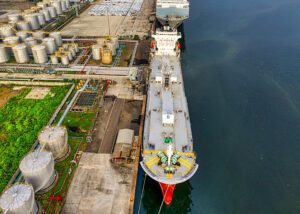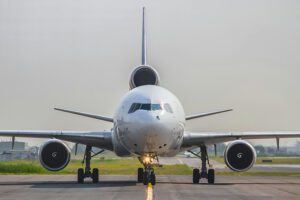Days after the first shipment of copper from the Democratic Republic of Congo (DRC) to the U.S. via the Lobito Corridor rail project, the U.S. on Aug.28 announced plans to extend the corridor, which is part of an effort to counter China’s control of the global supply of critical minerals.
Africa is becoming a key staging ground in the U.S.-China rivalry for the critical minerals needed to make clean energy technologies—including copper, lithium, nickel, cobalt and rare earth elements.
Projects like the Lobito Corridor can help the superpowers jockey for position, but the best solution for Africa and the U.S. might be investments that build Africa’s ability to process minerals.
China has helped solidify its dominance of global critical minerals processing by becoming a leading player in Africa’s mining sector, particularly in the supply chains for cobalt and copper, F&E Trends reports. This has alarmed Western governments, prompting them to counter with infrastructure investments, such as the Lobito Corridor, designed to facilitate the export of minerals from Africa to Western markets.
Cutting across Central Africa
The $2.3 billion Lobito Corridor project involves a 2,600-kilometer rail network, with accompanying infrastructure, that goes through the DRC, Zambia, and Angola, connecting inland regions with the Port of Lobito, Angola. The project has been spearheaded by the U.S. and financed through a public-private partnership involving the US government, the African Development Bank and multinational commodities giant Trafigura.
Trafigura announced the start of copper shipments to the U.S. on Aug. 22. Shipments from the corridor to Europe reportedly began earlier this year.
The U.S. is seeking to extend the corridor to Tanzania, creating a trans-Africa a rail link connecting the Indian and Atlantic oceans, according to an Aug. 28 announcement by the U.S. State Department.
“By securing access to critical minerals and exerting control over investments, innovation, and supply chains, the U.S. is positioning itself to maintain its leadership in the medium to long-term,” explains Anton Kuchukhidze, co-founder of the United Ukraine think tank.
The competition between the U.S. and China is taking place in many spheres, including the military one, Kuchukhidze explains. He says Taiwan’s report that China spent about $15 billion, or 7% of its defense budget, on exercises in the Western Pacific in 2023 gives a clear indication of China’s interest in military action targeting Taiwan and its neighbors.
“These are not just exercises—these are full-force military drills with the use of real weapons,” adds Kuchukhidze. “The question becomes whether America can outmaneuver China in global economic competition.”
China’s infrastructure projects in Africa
While the Lobito Corridor gives a big boost to U.S. and European efforts to catch up in Africa, Chinese companies already hold substantial interests in the mines responsible for the bulk of DRC’s copper and cobalt production. In fact the Lobito Corridor is currently mostly used by Chinese companies, the Mining Journal says.
And despite U.S. efforts, many African nations continue to favor partnerships with China, because that country is willing to take on risks and offer substantial investments in both extraction and processing, the Mining Journal reports.
China’s investment in African infrastructure not only gives them an advantage in strengthening their critical mineral supply chain, it also adds to China’s leverage in the United Nations, where they want other countries’ votes to support any future actions targeting Taiwan and the South China Sea, an article in Modern Diplomacy argues.
The infrastructure developments certainly leave African countries beholden to China.
For example, Zambia has been borrowing heavily from China over the past decade. The China Africa Research Initiative (CARI) estimates that the Zambian central government and its state-owned enterprises owe Chinese lenders at least $6.6 billion. The country halted its repayments in 2020 and continues to struggle with restructuring those debts three years on.
The US has used its influence, including through World Bank, to pressure China to arrange for Zambia debt relief.
China is continuing to build in Africa, and recently proposed investing over $1 billion to overhaul a crucial railway linking Zambia’s copper-rich region to the Tanzanian port of Dar es Salaam on the Indian Ocean. The Tanzanian and Zambian governments opted to grant a Chinese state-owned company the concession to operate the so-called TAZARA railway.
Developing local capacity could make a difference
Both the Chinese and U.S. approaches could be more effective if the larger powers did more to develop African infrastructure and ability to process minerals, observers say.
Western strategies have traditionally echoed colonial-era practices, focusing on the extraction of raw materials with little emphasis on local development, according to experts at the Brookings Institution.
For the West to truly counter China’s dominance and foster sustainable development in Africa, experts argue that there needs to be a shift towards investing in local processing capabilities.
Such an approach would be more likely to attract African partners forf the U.S., but could have broader positive impacts.
By building infrastructure that allows for the processing of minerals within Africa, Western nations could help create value-added industries on the continent. This not only diversifies the global supply chain but also supports genuine economic growth, creating a more balanced and equitable partnership.
Viktoriya Zakrevskaya contributed to this report.














